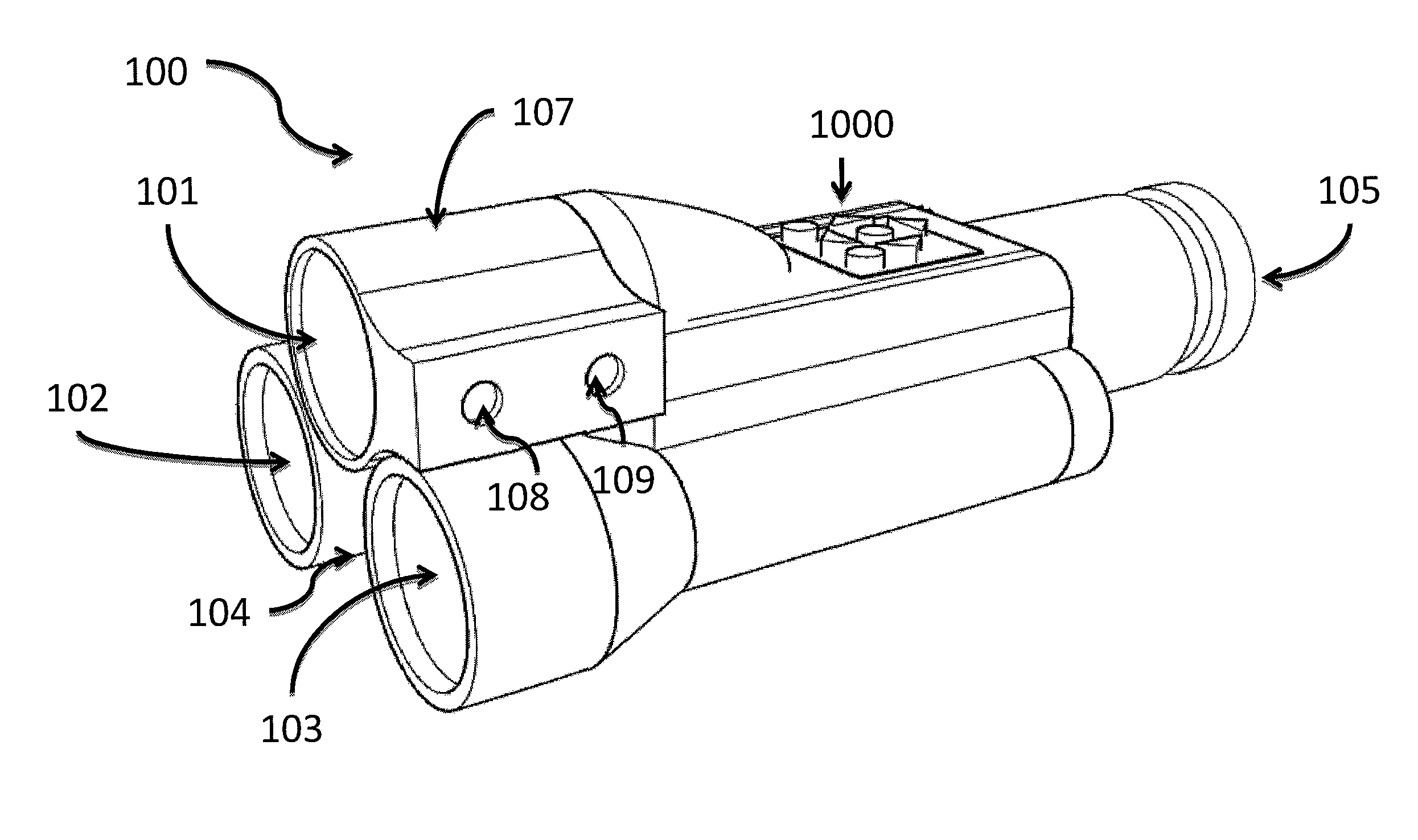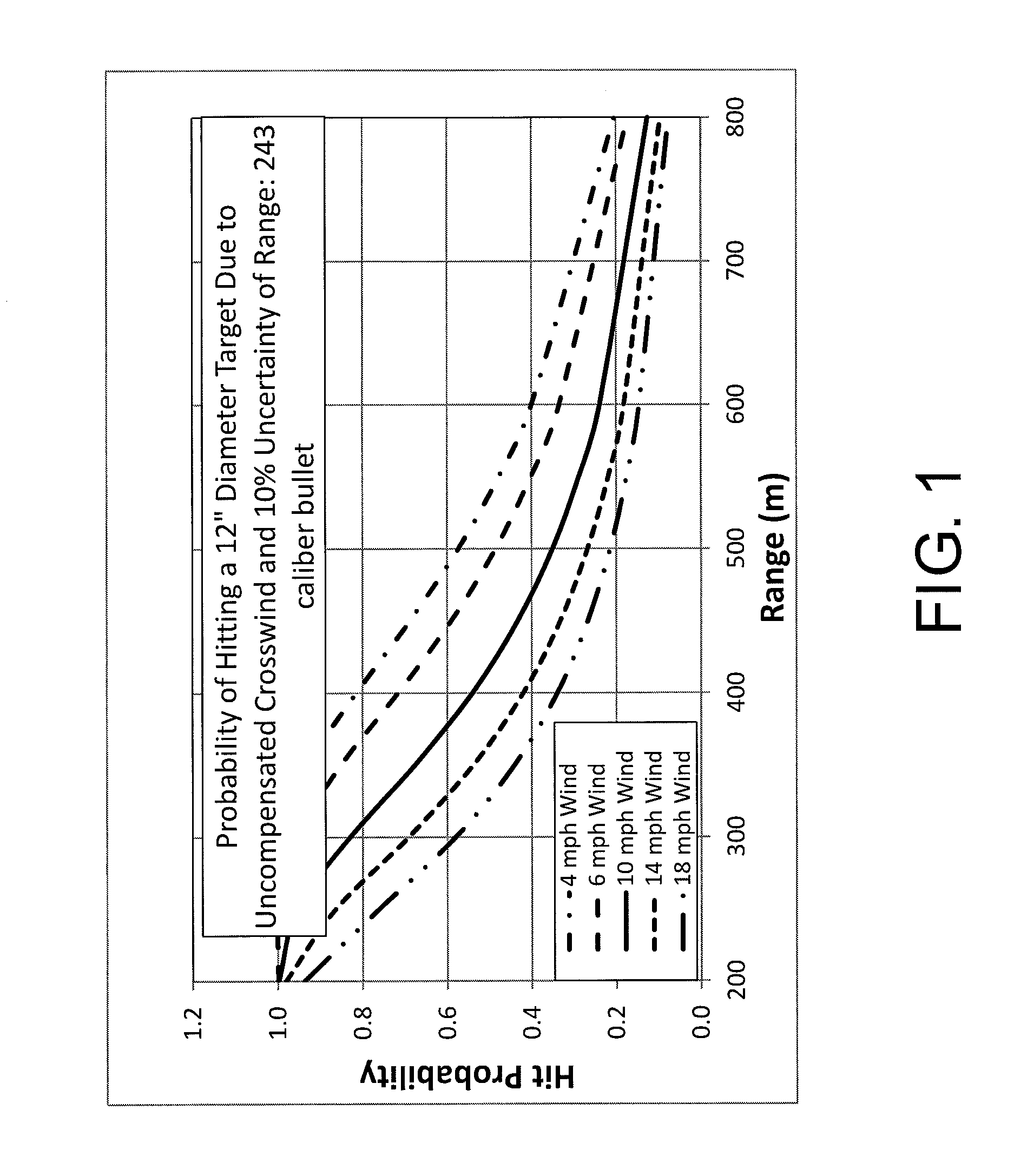Electro-optic system for crosswind measurement
a technology of optical system and crosswind measurement, applied in the direction of instruments, analogue processes, and specific applications using reradiation, can solve the problems of inability to conduct these functions, inability to achieve the effect of achieving the effect of achieving the effect of achieving the effect of achieving the effect of achieving the effect of achieving the effect of achieving the effect of achieving the effect of achieving the effect of achieving the effect of achieving the effect of achieving the effect of achieving
- Summary
- Abstract
- Description
- Claims
- Application Information
AI Technical Summary
Benefits of technology
Problems solved by technology
Method used
Image
Examples
further embodiment
[0132]According to a further embodiment, the XMS system 100, 100A in the above embodiments can be specially configured for use with existing riflescopes, thereby allowing the user to retain the direct view optics (DVO) which do not rely on battery power. An example of a system 100B according to the further embodiment is illustrated in FIG. 26. Particularly, this XMS 100B is illustrated as a modification to the alternative embodiment system 100A utilizing a single wind measurement channel 500. Accordingly, the system 100B may also include a dual divergence laser collimator 300A of the above-described alternative embodiment. However, the principles of this further embodiment can also be applied to embodiments of an XMS 100 utilizing two wind measurement channels 500, 600, e.g., by replacing the eyepiece 105 with the symbology projector 200 which is described in more detail below.
[0133]As illustrated in FIG. 26 (described in more detail below) the system 100B is mounted on an existing ...
PUM
 Login to View More
Login to View More Abstract
Description
Claims
Application Information
 Login to View More
Login to View More - R&D
- Intellectual Property
- Life Sciences
- Materials
- Tech Scout
- Unparalleled Data Quality
- Higher Quality Content
- 60% Fewer Hallucinations
Browse by: Latest US Patents, China's latest patents, Technical Efficacy Thesaurus, Application Domain, Technology Topic, Popular Technical Reports.
© 2025 PatSnap. All rights reserved.Legal|Privacy policy|Modern Slavery Act Transparency Statement|Sitemap|About US| Contact US: help@patsnap.com



